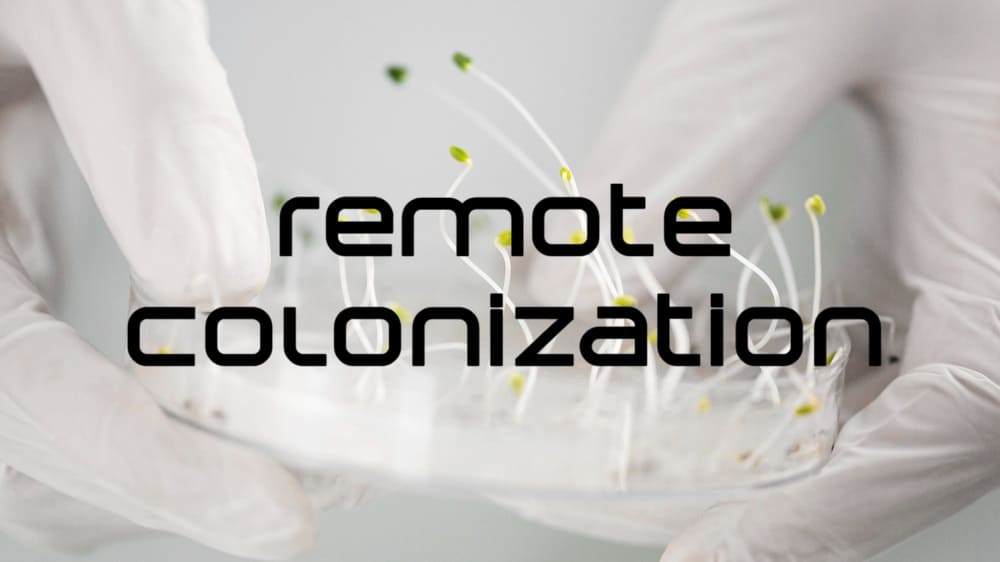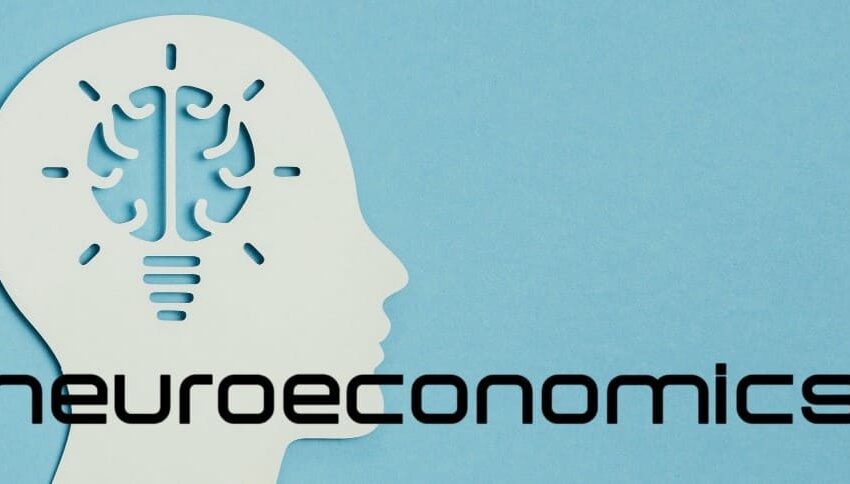
Overview:
Remote colonization in bioscience is an emerging field that explores the potential for establishing and sustaining life in extreme and previously uninhabitable environments. This ambitious endeavor involves extending human knowledge and capabilities to adapt organisms to harsh conditions such as deep-sea pressures, high-radiation spaces, or arid landscapes. By leveraging next-generation technologies, scientists aim to understand how life can survive and thrive in these challenging settings, which could revolutionize fields ranging from environmental management to space exploration.
The concept of remote colonization intersects with cutting-edge advancements in genomics, robotics, and synthetic biology, offering new tools and methodologies for exploring and manipulating life in unprecedented ways. As researchers develop resilient organisms and sophisticated systems to simulate and manage these environments, they are also confronted with significant challenges related to safety, logistics, and ethics. Addressing these challenges is crucial for the successful implementation of remote colonization strategies, paving the way for breakthroughs that could redefine our interaction with the natural world and beyond.
Contents:
- What is Remote Colonization in Bioscience
- Examples of Remote Colonization in Bioscience
- Importance of Remote Colonization in Bioscience
- How next-gen technologies contribute to Remote Colonization in Bioscience
- What are the potential challenges and solutions for Remote Colonization in Bioscience
- Summing Up
So, what is Remote Colonization in Bioscience:
In bioscience, “remote colonization” typically refers to the process by which organisms, such as bacteria or other microorganisms, establish themselves in new environments far from their original habitat. This concept can be observed in various contexts, including microbial ecology and the study of how life can spread and thrive in diverse or extreme environments.
Examples of Remote Colonization in Bioscience:
1. Microbial Colonization of Extreme Environments:
What it is: Microorganisms establishing themselves in harsh environments like deep-sea hydrothermal vents, Arctic ice, or desert soils.
Example: Extremophiles, such as thermophilic bacteria, colonizing hot springs or volcanic areas.
2. Bioremediation:
What it is: The introduction of microorganisms to remote or contaminated environments to break down pollutants.
Example: Adding oil-eating bacteria to oil spill sites to help clean up the contamination.
3. Microbial Spread in Space:
What it is: Studying how microorganisms can survive and potentially colonize extraterrestrial environments or spacecraft.
Example: Research on how bacteria might survive on the International Space Station or how they could be transferred to other planetary bodies.
4. Microbiome Transplantation:
What it is: The transfer of microbial communities from one environment to another, such as from one individual to another or from one location to another.
Example: Fecal microbiota transplantation to restore healthy gut microbiomes in patients with digestive disorders.
Importance of Remote Colonization in Bioscience:
1. Understanding Adaptation
Importance: Studying how organisms colonize and thrive in new or extreme environments helps scientists understand the mechanisms of adaptation and evolution. This knowledge can reveal how life responds to environmental stressors and changes.
Examples:
Extremophiles in Hydrothermal Vents: Microorganisms such as Thermococcus and Pyrococcus live in extreme temperatures and pressures at hydrothermal vents. Their ability to survive and thrive in these conditions has led to discoveries of unique enzymes that function at high temperatures, useful for industrial applications.
Psychrophiles in Antarctica: Bacteria like Psychrobacter cryohalolentis are found in the icy environments of Antarctica. Studying these organisms helps scientists understand how life can endure extreme cold and inform strategies for preserving biological samples in low temperatures.
2. Environmental Management
Importance: Remote colonization is crucial for environmental management, especially in contaminated or disturbed environments. It involves the use of microorganisms to restore and clean up polluted sites.
Examples:
Oil Spill Bioremediation: In the aftermath of oil spills, such as the Deepwater Horizon spill, scientists use oil-degrading bacteria like Alcanivorax borkumensis to help break down hydrocarbons. These bacteria can metabolize the oil and mitigate the environmental impact.
Heavy Metal Removal: Certain bacteria and fungi, such as Bacillus species and Fusarium fungi, can absorb or detoxify heavy metals from contaminated soils, helping to rehabilitate polluted land.
3. Space Exploration
Importance: Understanding how microorganisms can survive and potentially colonize extraterrestrial environments is vital for space exploration. This research provides insights into the possibilities of life beyond Earth and helps ensure the safety of space missions.
Examples:
Microorganisms on the ISS: Research on the International Space Station (ISS) has shown that certain bacteria can survive and even thrive in microgravity. For instance, Bacillus spores and Staphylococcus species have been studied for their resilience and growth in space conditions.
Mars Simulation Experiments: Scientists simulate Martian conditions to study how Earth microorganisms might survive. Experiments with extremophiles in Mars-like environments provide clues about the potential for life on the Red Planet and the challenges of future colonization.
4. Medical Applications
Importance: Remote colonization insights can be applied to medical science, particularly in understanding and manipulating microbial communities for health benefits. This includes the development of new treatments and therapeutic strategies.
Examples:
Fecal Microbiota Transplantation (FMT): Transferring gut microbiota from healthy donors to patients with disorders like Clostridium difficile infection helps restore a balanced microbiome and improve gut health.
Probiotic Development: Studying how beneficial microbes colonize different environments allows scientists to develop probiotics that can support digestive health and prevent diseases.
How next-gen technologies contribute to Remote Colonization in Bioscience:
1. Advanced Genomics and Metagenomics:
Contribution: These technologies enable comprehensive analysis of microbial communities and their interactions with new environments.
Examples:
Metagenomic Sequencing: Allows researchers to identify and characterize the genetic material of entire microbial communities in extreme environments, such as deep-sea vents or Arctic ice. This helps in understanding how microbes adapt to remote or extreme conditions.
Synthetic Genomics: Enables the design and creation of customized microorganisms that can thrive in specific remote environments, such as engineered bacteria for bioremediation or extreme conditions.
2. Robotic and Autonomous Systems:
Contribution: Robotics and autonomous systems facilitate exploration and monitoring of remote or hazardous environments where human presence is limited.
Examples:
Underwater Robots: Robots like ROVs (Remotely Operated Vehicles) are used to explore and study microbial life in the deep ocean. They collect samples and data from environments that are otherwise inaccessible.
Autonomous Field Sensors: Devices that monitor environmental conditions and microbial activity in real-time, providing valuable data for understanding how life colonizes and survives in remote locations.
3. Bioreactors and Controlled Environment Systems:
Contribution: These systems allow for the simulation and study of remote environments under controlled conditions, facilitating research and development of biotechnological solutions.
Examples:
Space Bioreactors: Bioreactors designed for space stations that simulate microgravity conditions help scientists study microbial growth and behavior in space, which is crucial for understanding how organisms might colonize extraterrestrial environments.
Extreme Environment Simulators: Facilities that replicate high-pressure, low-temperature, or high-radiation conditions to study microbial survival and adaptation.
4. Bioprinting and Synthetic Biology:
Contribution: Bioprinting and synthetic biology create new biological systems and organisms designed to thrive in specific environments.
Examples:
Bioprinting for Space Agriculture: Developing bioengineered plants or microorganisms that can grow in space habitats or on other planets using 3D bioprinting technologies.
Synthetic Microorganisms: Engineering microbes with enhanced capabilities to survive and perform specific functions, such as producing biofuels or cleaning up pollutants in extreme environments.
5. AI and Machine Learning:
Contribution: AI and machine learning optimize processes, predict outcomes, and analyze complex data related to remote colonization.
Examples:
Predictive Modeling: AI models simulate how microorganisms might behave in new or extreme environments, helping to design more effective bioreactors or habitat systems.
Data Analysis: Machine learning algorithms analyze vast amounts of data from sensors and experiments, identifying patterns and making predictions about microbial colonization and survival.
6. Life Support Systems and Environmental Management:
Contribution: Technologies for managing resources and maintaining life support systems are essential for sustaining life in remote environments.
Examples:
Closed-Loop Systems: Advanced recycling systems that manage air, water, and waste in space habitats or isolated environments, ensuring sustainability and reducing dependency on external supplies.
Bioremediation Technologies: Innovations in using microorganisms to clean up pollutants or manage waste in remote locations, such as oil spills or contaminated soils.
7. Genetic Engineering and CRISPR:
Contribution: Genetic engineering and CRISPR technology allow for precise modifications of organisms to enhance their ability to colonize and thrive in new environments.
Examples:
Enhanced Extremophiles: Using CRISPR to modify extremophiles to improve their resistance to extreme conditions, such as high radiation or extreme temperatures.
Genetically Modified Plants: Developing plants with traits that allow them to grow in space or on other planets, supporting long-term human habitation.
What are the potential challenges and solutions for Remote Colonization in Bioscience:
1. Environmental Extremes:
Challenge: Remote environments often present extreme conditions such as high radiation, extreme temperatures, or low pressure that can be hostile to life.
Examples:
Space: In space, the lack of atmosphere exposes organisms to high levels of radiation and vacuum conditions.
Deep-Sea: The high pressure and cold temperatures in deep-sea environments pose challenges for microbial survival.
Solutions:
Engineering Resilience: Developing microorganisms or organisms with enhanced resistance to these extremes through genetic engineering or synthetic biology.
Protective Technologies: Creating protective environments or habitats that shield organisms from harsh conditions.
2. Resource Limitations:
Challenge: Remote locations often have limited resources such as nutrients, water, or energy sources, which are essential for sustaining life.
Examples:
Space Habitats: Limited resources for growing food or producing oxygen and water.
Arctic or Desert Environments: Scarcity of nutrients and water for microbial life.
Solutions:
Closed-Loop Systems: Implementing advanced recycling and life-support systems to efficiently manage and recycle resources.
Biotechnological Solutions: Engineering organisms or systems that can utilize available resources efficiently or generate necessary resources.
3. Biological Containment and Safety:
Challenge: Introducing organisms into new environments carries risks of unintended ecological impacts or contamination.
Examples:
Space Missions: The risk of contaminating other planets or celestial bodies with Earth-origin microorganisms.
Bioremediation Projects: Potential unintended consequences of introducing engineered microbes into natural ecosystems.
Solutions:
Strict Containment Protocols: Ensuring rigorous containment and safety measures to prevent accidental release or contamination.
Risk Assessments: Conducting thorough risk assessments and monitoring to evaluate and mitigate potential ecological impacts.
4. Technical and Logistical Challenges:
Challenge: Establishing and maintaining remote colonies involves complex technical and logistical issues, including transportation, habitat construction, and system maintenance.
Examples:
Space Colonization: Transporting materials and equipment to space and building sustainable habitats.
Deep-Sea Exploration: Deploying and maintaining equipment in harsh underwater conditions.
Solutions:
Advanced Engineering: Developing robust and adaptable technologies for construction and maintenance in remote environments.
Autonomous Systems: Utilizing robotics and automation to perform tasks and repairs in challenging locations.
5. Ethical and Regulatory Issues:
Challenge: Remote colonization raises ethical and regulatory concerns, particularly related to the impact on existing ecosystems and the potential for unintended consequences.
Examples:
Planetary Protection: Ethical considerations regarding the contamination of extraterrestrial environments.
Biosafety Regulations: Ensuring that biotechnological interventions adhere to safety and ethical standards.
Solutions:
International Agreements: Adhering to international agreements and protocols for planetary protection and biosafety.
Ethical Guidelines: Developing and following ethical guidelines to address concerns related to environmental impact and safety.
6. Economic and Resource Constraints:
Challenge: Remote colonization efforts often require substantial financial investment and resources, which can be a barrier to progress.
Examples:
Space Missions: High costs associated with space travel, habitat construction, and research.
Biotechnological Development: Significant investment needed for developing and scaling new biotechnologies.
Solutions:
Public-Private Partnerships: Collaborating with government agencies, private companies, and research institutions to share costs and resources.
Innovative Funding Models: Exploring alternative funding models and incentives to support research and development.
Summing Up:
Remote colonization in bioscience opens up exciting possibilities for understanding and expanding life into extreme and previously inaccessible environments. Advances in genomics, robotics, and synthetic biology are driving this frontier by enabling the study of how organisms can adapt to harsh conditions such as high radiation, extreme temperatures, or limited resources. Technologies like bioreactors, autonomous systems, and engineered extremophiles are essential for overcoming the challenges of environmental extremes and resource constraints. These innovations allow researchers to simulate and explore new environments, develop resilient life forms, and manage resources efficiently.
However, remote colonization also presents significant challenges, including biological containment risks, technical and logistical complexities, and ethical considerations. Ensuring that introduced organisms do not disrupt existing ecosystems or cause unintended consequences requires rigorous safety protocols and risk assessments. Moreover, the substantial economic investment needed for developing and implementing these technologies highlights the importance of collaborative efforts and innovative funding models. By addressing these challenges through continued research and cross-disciplinary collaboration, we can advance remote colonization efforts and unlock new frontiers in bioscience, potentially transforming our approach to environmental management, space exploration, and biotechnology.
Courtesy Image: FreePik











